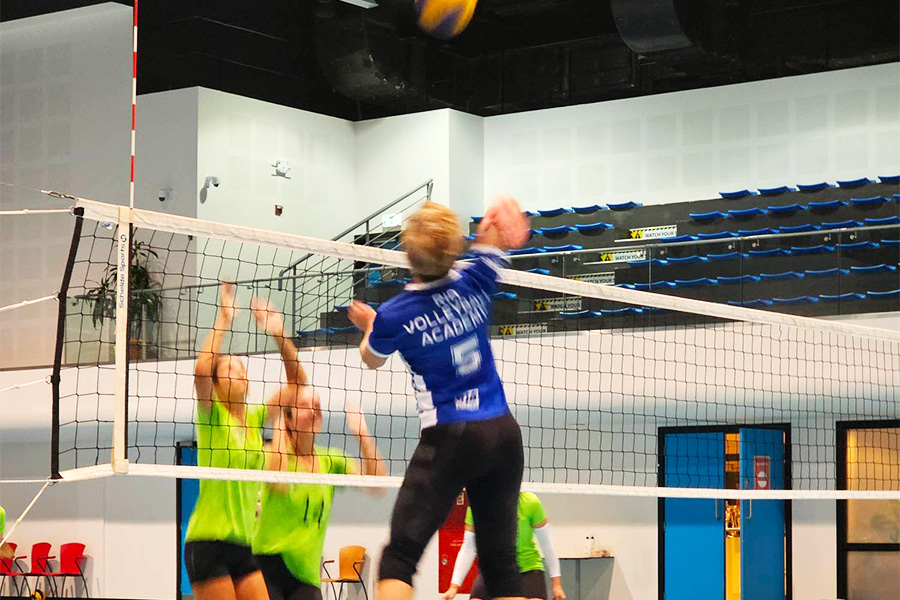Spike in volleyball is a powerful and impressive attack that can win points and turn the momentum of a game. To execute a successful spike, a player needs to combine power, timing, and technique. In this blog, we will discuss how to spike in volleyball and provide some tips to improve your spiking skills.
- Approach. The first step in spiking is the approach. The player should start from the back of the court and take a few quick steps towards the net, timing their approach with the setter's pass. The last two steps should be longer and more explosive, helping the player to jump higher.
- Jump. After the approach, the player should jump as high as possible. The jump should be explosive, with the arms and legs extending fully. The player should aim to jump in front of the ball, with their body angled towards the target.
- Arm Swing. As the player jumps, they should swing their arms back, preparing for the hit. The dominant arm should be fully extended, with the elbow slightly bent. The non-dominant arm should be raised and ready to assist with the jump and balance.
- Contact. The next step is the contact with the ball. The player should aim to hit the ball at the highest point of their jump, with the dominant hand contacting the ball first. The hit should be powerful and controlled, with the arm fully extended and the hand open and facing downwards.
- Follow Through. After hitting the ball, the player should follow through with their arm, reaching high above their head and landing on the opposite foot to maintain balance.
Tips for Improving Your Spiking Skills:
- Practice Timing: The timing of the approach and jump is crucial for a successful spike. Practice the timing with your setter and work on jumping at the right moment.
- Improve Your Jump: Improving your jump can help you jump higher and hit the ball with more power. Focus on exercises that strengthen your legs and core, such as squats and lunges.
- Practice Your Arm Swing: A strong arm swing is essential for a powerful spike. Practice your arm swing separately, focusing on extending your arm fully and keeping your elbow slightly bent.
- Aim for Targets: Practice hitting the ball to different targets on the court, such as the corners or the middle of the court. This will improve your accuracy and help you hit the ball past the opposing team's blockers.
- Watch Professional Players: Watching professional volleyball players can help you learn new techniques and strategies for spiking. Study their approach, timing, and arm swing and try to incorporate these techniques into your own game.
In conclusion, spiking is an essential skill in volleyball that requires a combination of power, timing, and technique. By following these steps and tips and practicing regularly, players can improve their spiking skills and become more effective on the court. Remember to focus on accuracy, timing, and power, and don't be afraid to experiment with different techniques to find what works best for you.

